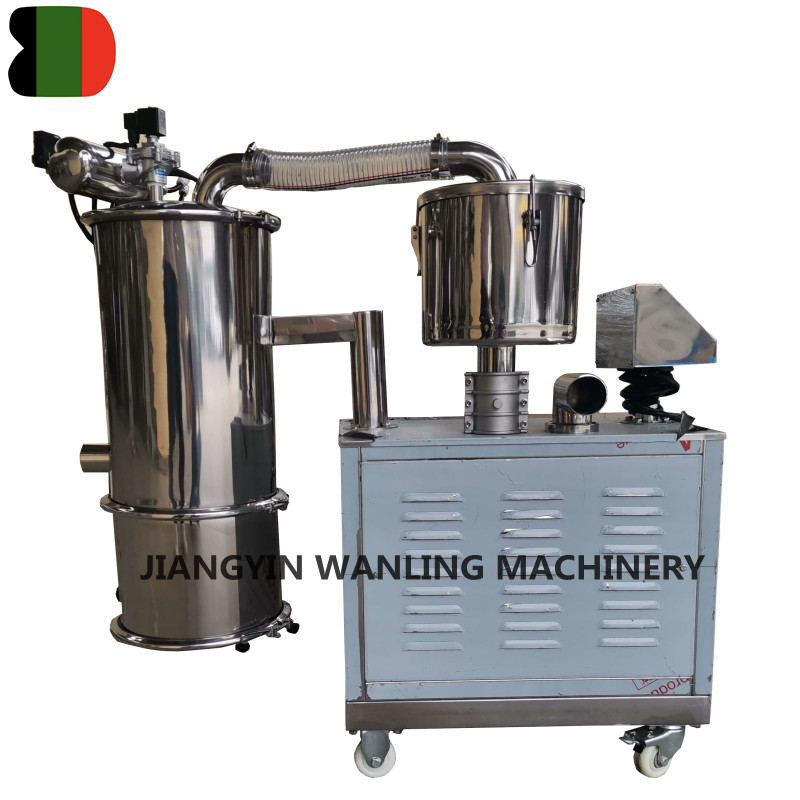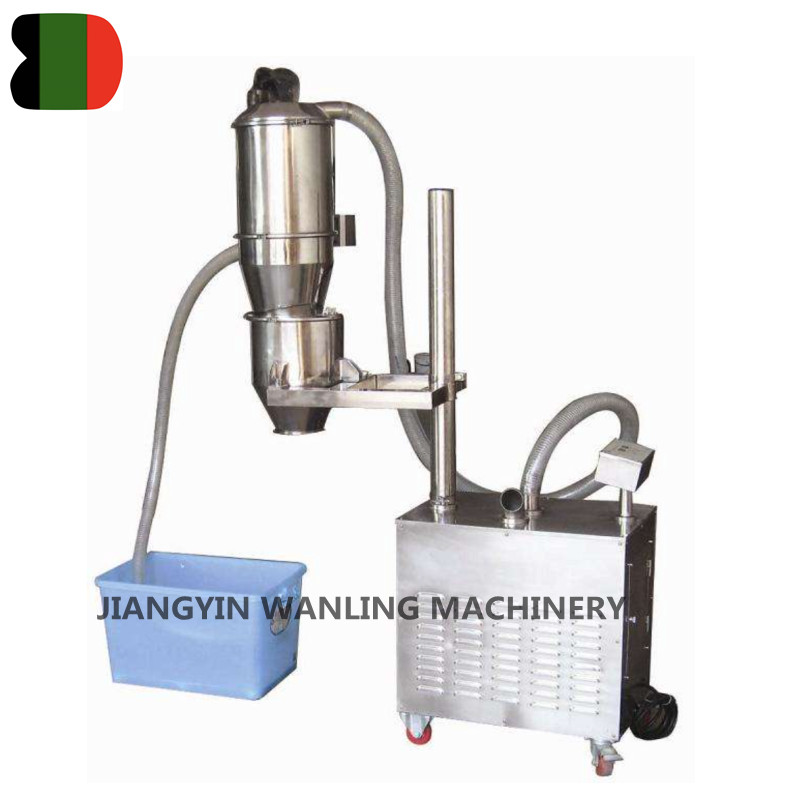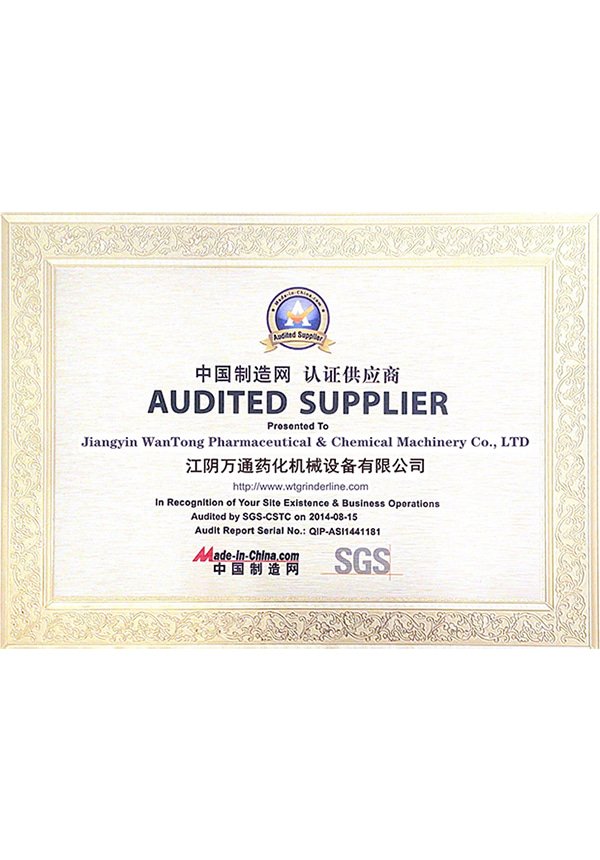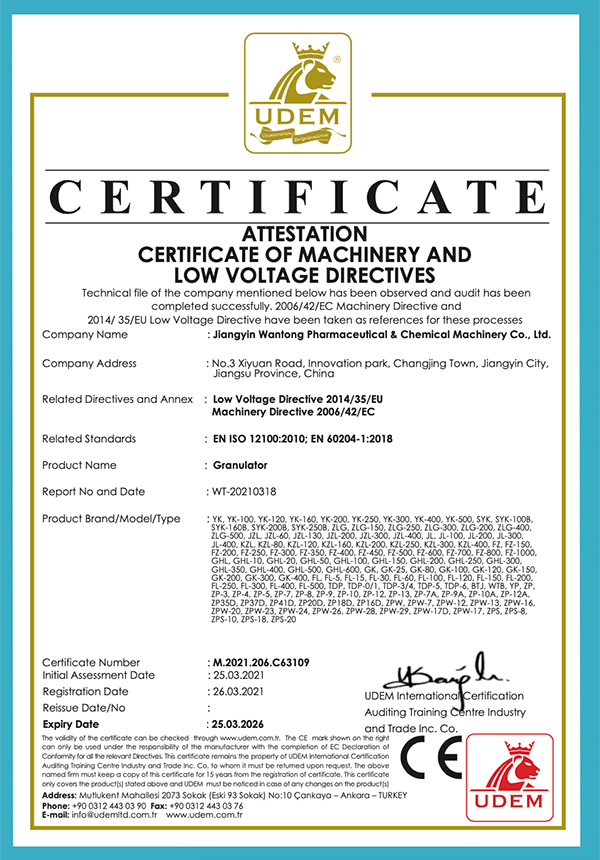Vakuumtransportør Producent
-

ZKS fint pulver vakuumtransportør
ZKS Vacuum -feeder bruger en vakuumpumpe til at trække luften, så indløbet af sugedysen og hele systemet er i en bestemt vakuumtilstand. ... -

ZKS rustfrit stål madpulver vakuumtransportør
ZKS Rustfrit stål madpulver vakuumtransportør er et vakuumtransportør i rustfrit stål designet til hygiejnisk håndtering af fødevarepulve... -

ZKS rustfrit stål pulver vakuumtransportør
ZKS -vakuumtransportøren i rustfrit stål er et vakuumtransportør i rustfrit stål designet til hygiejnisk håndtering af fødevarepulvere.
ZKS Vacuum -feeder bruger en vakuumpumpe til at trække luften, så indløbet af sugedysen og hele systemet er i en bestemt vakuumtilstand. Pulverpartiklerne suges ind i dysen sammen med den udvendige luft for at danne en luftstrøm, der passerer gennem sugerøret og når hopperen. Det adskilte materiale indgår i det modtagende udstyr. Fodrings- og udledningsenheden afsluttes ved kontinuerligt at åbne og lukke den pneumatiske trevejsventil, og den kontrolleres af kontrolpanelet.

Om os
Ære
-
 Ære
Ære -
 Ce
Ce
Nyheder
-
Industri -nyheder 2025-10-09
EN dobbelt kegle blender har tydelige fordele og begrænsninger i forhold til ...
Se mere -
Industri -nyheder 2025-10-01
El-drevet Bakke tørretumblere Fellerdele: Præcis og stabil t...
Se mere -
Industri -nyheder 2025-09-22
Båndblendere er blogt de mest alsidige stykker industrielt blandeudstyr. De er designet til effek...
Se mere -
Industri -nyheder 2025-09-19
Fræseudstyr spiller en afgørende rolle i industrier lige fra landbrug til minedrift og farmaceuti...
Se mere
Udvidelse af branchens viden
What is the design philosophy behind using a vacuum conveyor for handling dry powder materials?
The design philosophy behind using a vacuum conveyor for handling dry powder materials includes several key considerations:
Gentle Material Handling: Vacuum conveyors are designed to handle materials gently to prevent damage or degradation, which is particularly important for delicate dry powders.
Containment and Dust Control: They provide a closed environment that contains the material, preventing dust from escaping into the air, which is beneficial for both the work environment and the product quality.
Accuracy and Precision: Vacuum conveyors allow for precise control over the material flow, which is crucial for applications that require accurate dosing or measurement of powders.
Minimal Contamination Risk: The closed system of a vacuum conveyor reduces the risk of contamination from the surrounding environment, ensuring the purity of the conveyed material.
Ease of Cleaning and Sanitization: Vacuum conveyors are often designed to be easily disassembled for cleaning, which is essential in industries with strict hygiene requirements.
Space Efficiency: They can move materials in various directions (horizontally, vertically, or at an incline), making them suitable for compact spaces or multi-level facilities.
Automation Compatibility: Vacuum conveyors can be integrated into automated systems, streamlining the production process and reducing the need for manual labor.
Versatility: While suitable for dry powders, vacuum conveyors can be adapted for other types of materials, offering flexibility in their use.
Safety: The enclosed design of vacuum conveyors enhances safety by reducing exposure to moving parts.
Energy Efficiency: Vacuum conveyors can be more energy-efficient for certain applications, especially where precise control of material flow is required.
Traceability: They can be part of a system that allows for the tracking of materials, which is important for quality assurance and regulatory compliance.
The design of a vacuum conveyor is centered around creating a system that is gentle on the product, easy to control, clean, and maintain, and that can be integrated into larger automated systems for efficiency and safety.




